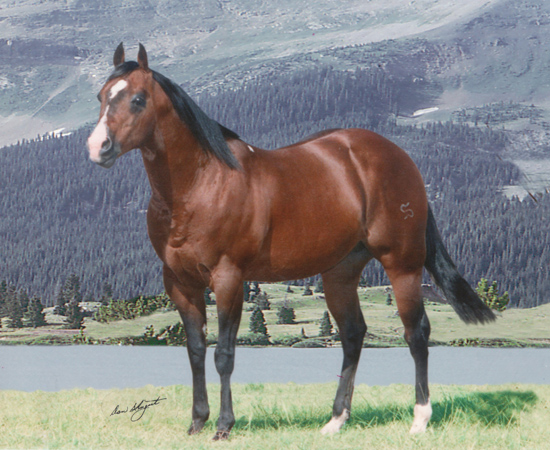
COVID-19 has caused postponements and cancellations of sports venues worldwide, including the 2020 NCHA Kit Kat Sugar Super Stakes, which was set to begin a 25-day run on March 24. While cutters await word on the status of this year’s Super Stakes, it seems a good time to revisit the history of this important link in NCHA’s famous Triple Crown.
This year marks the 40th anniversary of the NCHA Super Stakes, which was created to enhance the breeding industry and offer cutting horse owners a unique opportunity to promote their stallions, as well as to increase the market value of their progeny.
The early 1980s ushered in a boom time for the US economy, including the cutting horse industry. NCHA memberships, show entries, and purses had increased dramatically in the previous decade and, in 1980, NCHA leaders created a unique incentive for the offspring of subscribed stallions. In 1981, seventeen stallions subscribed to the first NCHA Super Stakes, including Doc’s Lynx, whose daughter, Stylish Lynx, won the inaugural event’s Open championship. Five years later, in 1986, five times as many stallions were enrolled, and by 2015, the total had reached 248.
Stylish Lynx, shown by Don Parker, came into the 1981 Super Stakes following a thirteenth-place finish, in the 1980 NCHA Futurity. Her competition in the 15-horse Super Stakes Finals included the Futurity champion, Mis Royal Mahogany, and third-place Futurity finisher Freckles Hustler, a full brother to Freckles Playboy. But Stylish Lynx won the day, and $79,525, with a score of 219 points. Miss Peppy Also, by Mr San Peppy, claimed the reserve championship and $52,154, with 218 points under Buster Welch.
As if to prove the power of Super Stakes sires, Doc’s Lynx, her sire, was the only notable horse in the pedigree of champion Stylish Lynx, whose dam, Stylish Squaw, was by Silver King Jr. out of Balmy Squaw. But Stylish Lynx has left her mark on future generations of cutting horses through her Doc’s Hickory son, SR Instant Choice, sire of the earners of $5.9 million.
Following the 1981 Super Stakes, eight horsemen, including Shorty Freeman, who had successfully syndicated Doc O’Lena in 1978, created the Super Syndicate Ltd., in 1982, an ambitious marketing plan that initially consisted of eight stallions, including Doc’s Lynx and Smokin Jose, owned by Texas businessman Bud Sweazea and trainer Don Parker. Doc Athena, by Doc O’Lena; Smokin Jose, by Jose Uno; and Leonard Milligan, by Okie Leo, were the only stallions of the original Super Syndicate eight that were not sired by Doc Bar. The five Doc Bar sons were Doc Quixote, Doc Tari, Doc’s Hickory, Nu Bar, and Doc’s Lynx, all also subscribed to the NCHA Super Stakes.
The Super Syndicate did not survive the stock market crash of 1987, and Doc Athena, Doc Tari, Especial, and Smokin Jose were consigned to the Central Texas Summer Sale, held at Ables Equestrian Center, in Benbrook, Tex., on July 28, 1989. The NCHA Super Stakes, however, did survive and thrive into the 21st century and beyond.
This is the first in a series of “Looking Back†posts highlighting the NCHA Super Stakes.
For more about the history of the NCHA Triple Crown, read Cutting Horse Gold: 50 Years of the NCHA Futurity.
